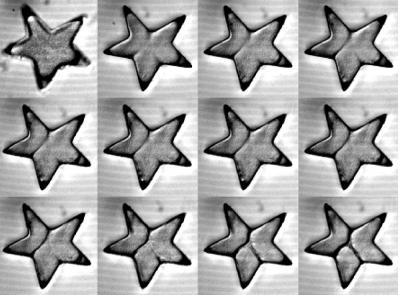Cells are intrinsically artistic. When the right signals tell a cell to divide, it usually splits down the middle, resulting in two identical daughter cells, though stem cells are the exception to the rule. This natural symmetry is visible on the macroscopic scale as well. All living creatures, be they mushrooms or humans, are visibly symmetric, a product of our cells' preference for equilibrium.
Scientists at the Marine Biological Laboratory (MBL) Whitman Center for Visiting Research are curious to know what cues tell a cell to divide at the center. Fred Chang, professor of microbiology at Columbia University, his postdoctoral student Nicolas Minc, and David Burgess, professor of biology at Boston College, are placing sea urchin eggs in snug, microscopic chambers shaped like triangles, squares, rectangles, stars, and ice cream cones to see whether the cell will still split 50-50.

A cell's shape, which is naturally circular, is known to play an important role in where it divides. "We're trying to figure out the plane of division when cells are placed in oddly shaped chambers," Dr. Chang says. "Is it in the same place or way off the middle?"
Cell division is an ancient process. All multicellular organisms have similar proteins for the task, so any information gathered from the sea urchin research is relevant to human biology as well. Chang and Burgess hope to apply their findings to the established theories of cell division or possibly come up with a model of their own.






Comments